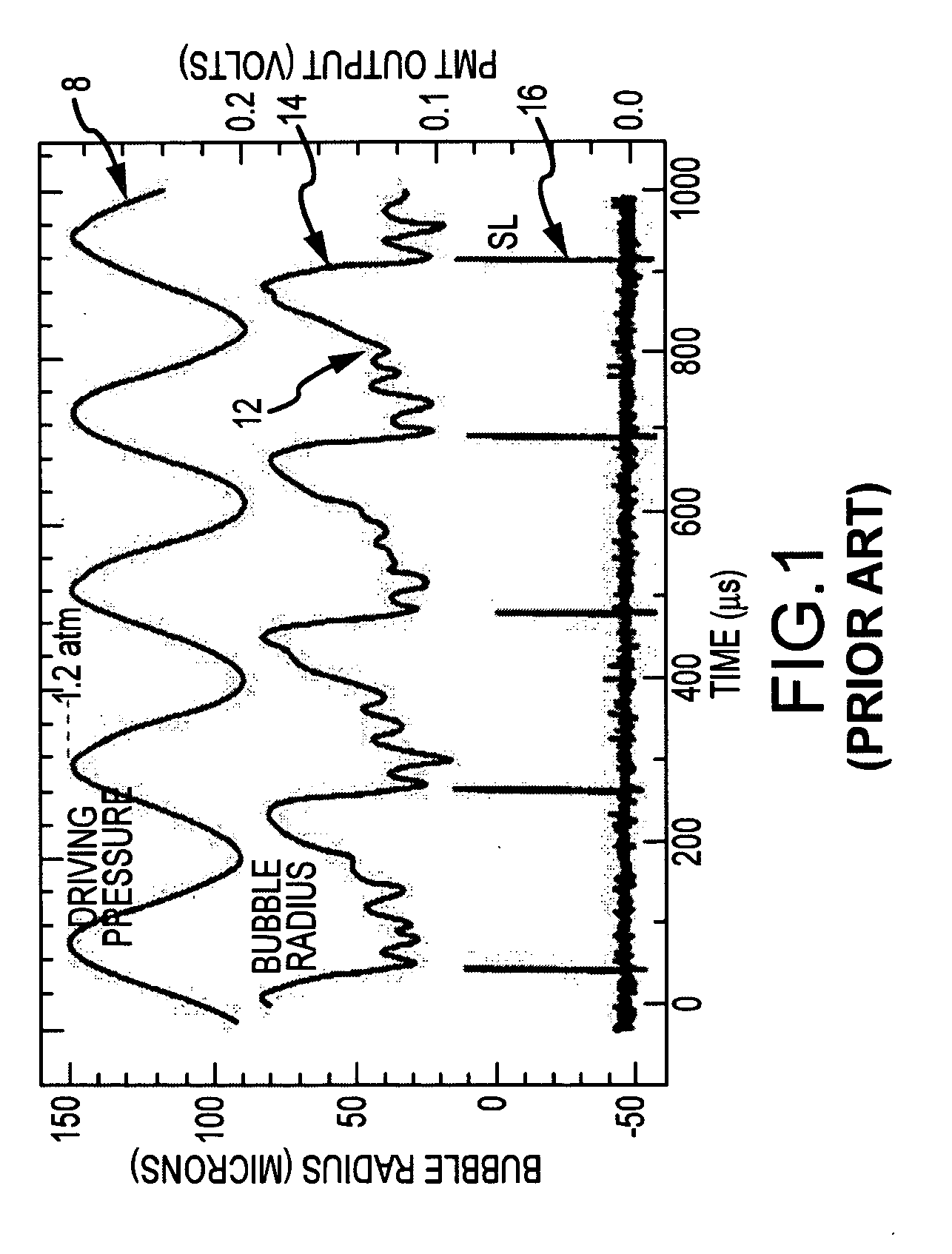Acoustic crystal sonoluminescent cavitation devices and ir/thz sources
a technology of sonoluminescent cavitation and ir/thz source, which is applied in the direction of mechanical vibration separation, nuclear reactors, greenhouse gas reduction, etc., can solve the problems that many aspects of the phenomena have not yet been characterized, and achieve the effect of efficient rou
- Summary
- Abstract
- Description
- Claims
- Application Information
AI Technical Summary
Benefits of technology
Problems solved by technology
Method used
Image
Examples
Embodiment Construction
[0028]The present invention describes an acoustic crystal structure for enhancing sonoluminescence. Defect cavities in the crystal structure concentrate the driving pressure from applied sound waves into the cavity to cavitate gas bubbles in a liquid in the defect cavity to produce sonoluminescence. A waveguide may be coupled to the acoustic crystal to extract, collect and route a band of electromagnetic (EM) radiation around a specified source wavelength to an output port for emission by an antenna to provide an EM source. The marriage of the sonoluminescence phenomenon with an acoustic crystal provides for an efficient source of narrow or broad band IR (approximately 1 micron to 30 micron) or THz (approximately 300 GHz to 4 THz) radiation. By convention IR sources are referred to in terms of wavelength while THz sources are referred to in terms of frequency.
[0029]As used herein a ‘sound wave’ refers to a pressure fluctuation that travels through a medium (solid, liquid or gas) at ...
PUM
| Property | Measurement | Unit |
|---|---|---|
| Length | aaaaa | aaaaa |
| Length | aaaaa | aaaaa |
| Length | aaaaa | aaaaa |
Abstract
Description
Claims
Application Information
 Login to View More
Login to View More - R&D
- Intellectual Property
- Life Sciences
- Materials
- Tech Scout
- Unparalleled Data Quality
- Higher Quality Content
- 60% Fewer Hallucinations
Browse by: Latest US Patents, China's latest patents, Technical Efficacy Thesaurus, Application Domain, Technology Topic, Popular Technical Reports.
© 2025 PatSnap. All rights reserved.Legal|Privacy policy|Modern Slavery Act Transparency Statement|Sitemap|About US| Contact US: help@patsnap.com



